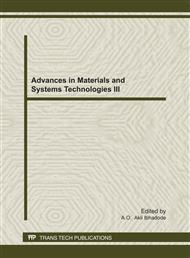p.133
p.143
p.151
p.159
p.167
p.177
p.185
p.191
p.199
Computer Simulation of Lightning Strikes to a Horizontally Buried Earth-Electrode: A Parametric Analysis
Abstract:
Earthing systems made basically from earth electrodes need to be effectively designed to meet the increasing demand on safety. The aim of this paper is to use computer simulation to analyze the transient response of a horizontally buried earth electrode and how this response is influenced by factors like the energization type, the soil parameters, the depth of burial and the earth electrode geometry. The model used is the transmission line theory with a general application of the telegraphy equations which are solved numerically using the finite difference time domain scheme while the per unit length parameters were computed from a well known integral expression using the moment’s method. The results of the parametric analysis are validated by comparison with those found in literature.
Info:
Periodical:
Pages:
167-174
Citation:
Online since:
October 2011
Authors:
Keywords:
Price:
Сopyright:
© 2012 Trans Tech Publications Ltd. All Rights Reserved
Share:
Citation:


